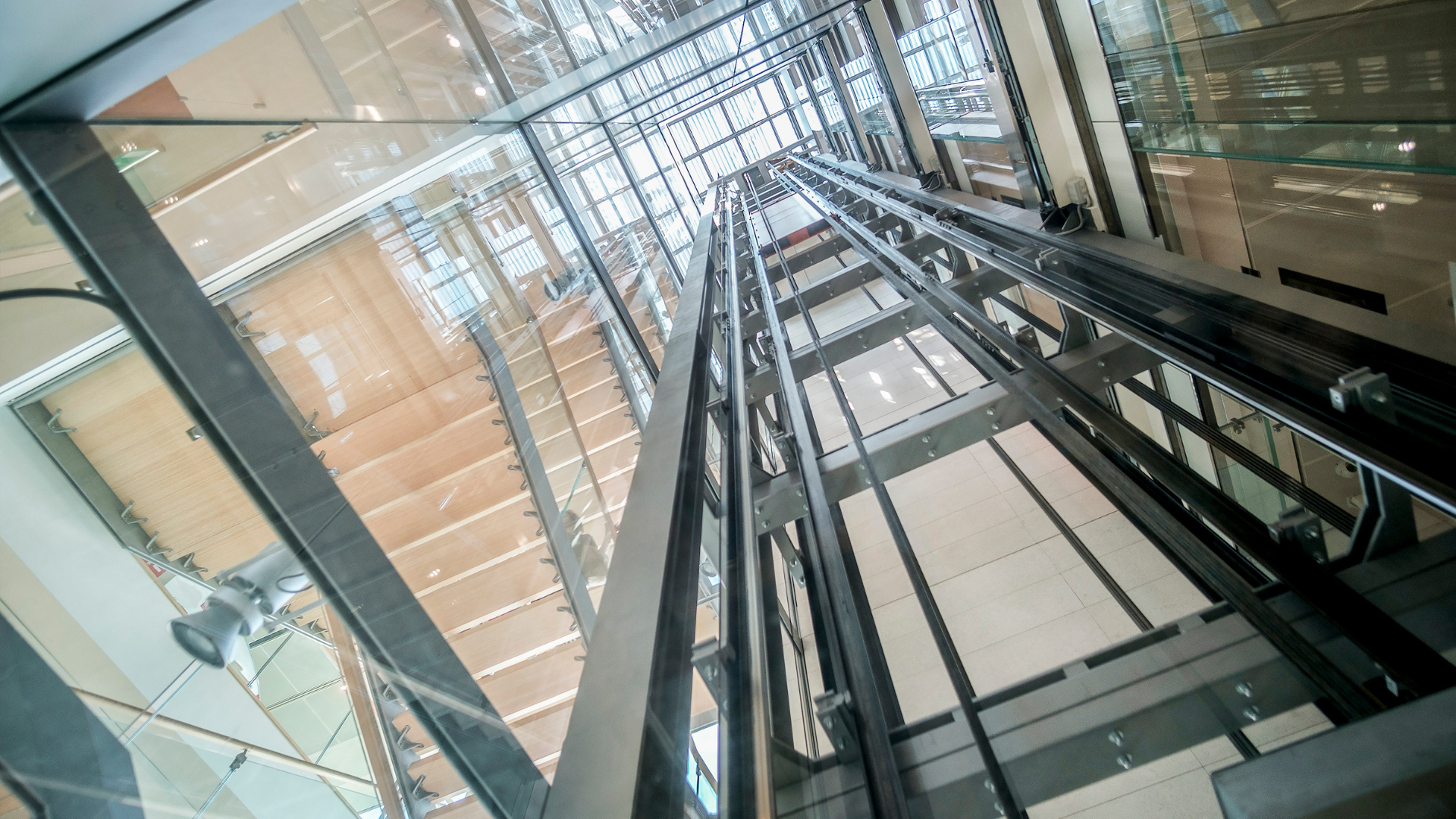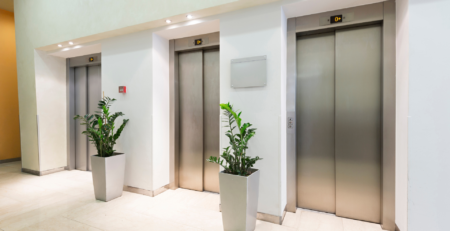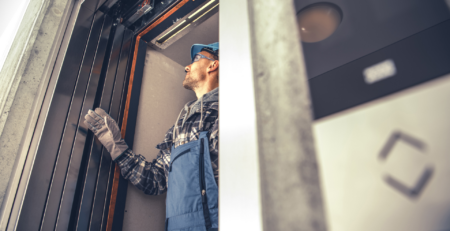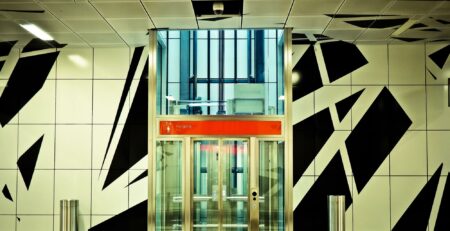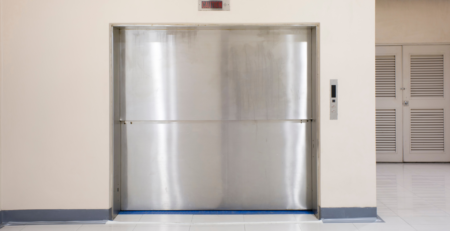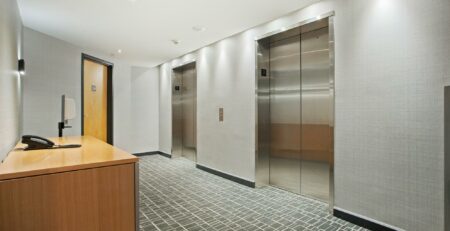Top Ways to Enhance Efficiency With Elevator Modernization
Elevators are vital in keeping your property running smoothly, but they can become outdated and inefficient. Toledo Elevator offers modern solutions that improve reliability and performance.
This article will guide you through the top ways to enhance efficiency with elevator modernization, saving you time and money. Let’s dive in!
Key Takeaways
- Elevator modernization introduces cutting-edge technology that significantly boosts performance, safety, and energy efficiency. By replacing old components with high-tech options like IoT devices and AI algorithms, elevators become faster, more reliable, and consume less power.
- Upgrading elevator systems can lead to substantial cost savings for commercial properties. This includes lower energy bills due to more efficient operations, reduced maintenance costs through less frequent repairs, and minimized downtime which enhances tenant satisfaction.
- Modernizing elevators involves a variety of improvements such as electrical system upgrades, advanced door operators for smoother operation, and the integration of contemporary safety features. All these enhancements not only extend the lifespan of an elevator but also ensure it meets current regulations and standards.
- Ensuring code compliance is vital in elevator modernization projects to safeguard efficient operation. Compliance includes adhering to safety standards set by regulatory bodies and updating emergency communication systems among other requirements.
- Adding new features during modernization can transform elevators into more than just transportation units within buildings. Incorporating touchless technology solutions and upgrading cab interiors makes rides safer and creates a better experience for users.
Understanding Elevator Modernization
Elevator modernization transforms outdated lift systems into high-performing, energy-efficient marvels. This process not only enhances safety and reliability but also significantly improves the overall efficiency of elevator operations in commercial buildings.
What is it?
Elevator modernization involves upgrading your building’s elevator system to enhance performance, efficiency, and safety. This process replaces outdated components with advanced technology, ensuring smooth and efficient operation.
It extends the lifespan of an elevator, increases energy efficiency, and improves overall function. Modernizing also ensures elevators meet current safety codes and regulations while making them more attractive to users.
The need for modernization arises as technology advances and building occupants demand better service. Upgrades can include a control system upgrade, enhancements to hoisting equipment, door operators improvements ,and bolstering safety features.
These changes not only boost the operational efficiency of elevators but also their aesthetic appeal—adding value to your property. Now let’s delve into why it is important to invest in elevator modernization.
Why modernize?
Understanding what elevator modernization entails leads naturally to the question of its necessity. Modernizing an elevator system isn’t just about upgrading its parts; it’s about significantly enhancing performance, extending the lifespan of your equipment, and ensuring passenger safety.
As components age or become obsolete—often after 20 to 30 years depending on the type—they demand more repairs and can cause elevators to be out of service frequently. This scenario not only disrupts operations but also increases costs due to constant repairs.
Choosing to modernize improves efficiency dramatically, reducing energy consumption and operational costs over time. It boosts property value while meeting contemporary safety standards, providing peace of mind for both managers and occupants.
Given these advantages plus the potential savings in maintenance expenses highlighted by qualified contractors, making the decision to update becomes a strategic move towards optimizing building operations and ensuring reliability for years to come.
Benefits of elevator modernization
Elevator modernization offers numerous advantages that directly benefit both the passengers and commercial property managers. Upgrades result in improved performance, reliability, and safety, enhancing the overall experience for users.
These improvements are not just about speed; they also ensure smoother rides, reducing wear and tear on components. With modern technology, elevators operate more efficiently, saving energy costs over time.
This is especially critical as energy efficiency becomes a pivotal concern for properties aiming to reduce their carbon footprint.
Additionally, modernizing elevators extends their lifespan while bringing them up to code with current regulations and standards. This aspect of elevator upgrade reduces the frequency of expensive repairs and maintenance required to keep older models running smoothly.
Such an investment boosts the building’s appeal by providing a more aesthetically pleasing look, ultimately adding value to your property. Enhanced safety features like emergency communication systems protect passengers during crises, showcasing your commitment to tenant welfare and compliance with updated safety requirements.
Types of Elevator Modernization

Elevator modernization encompasses a variety of upgrades aimed at enhancing efficiency, safety, and performance. Exploring these diverse types reveals the vast potential for improving elevator operations in commercial properties.
Electrical system modernization
Electrical system modernization boosts the reliability and efficiency of an elevator’s performance. This essential upgrade involves revamping the electrical control system, hoisting machinery, and door operating systems.
Property managers often find these updates crucial for avoiding unnecessary breakdowns and ensuring elevators run smoothly. Modernized electrical systems can significantly reduce energy consumption, offering a greener footprint while trimming down operational costs.
Upgrading to modern electrical components not only enhances safety but also aligns with current technology trends in elevator design. It involves replacing outdated wiring and switchgear with state-of-the-art counterparts that promise durability and improved functionality.
This proactive approach minimizes the risk of malfunctions and extends the lifecycle of your building’s elevators, making it a wise investment for commercial properties aiming for long-term efficiency gains.
Control system modernization
Advancing from the realm of electrical system modernization, control system modernization emerges as a critical next step in enhancing elevator efficiency and performance. This upgrade shifts the focus to the heart of elevator operation, incorporating cutting-edge technologies like IoT devices and AI algorithms.
Such advancements enable superior monitoring and management capabilities, fundamentally transforming how elevators function. By adopting control system improvements, commercial property managers can expect not only faster and more reliable service but also significant energy savings.
Implementing an elevator technology update through control system modernization essentially means equipping your elevators with smarter, self-learning systems that adapt to traffic patterns and maintenance needs.
These intelligent systems reduce wait times, improve user experience, and extend the lifespan of the entire elevator setup. For any commercial property aiming for operational excellence and cost-effectiveness in its vertical transport services, upgrading to a sophisticated elevator management system is not just beneficial; it’s essential for staying competitive in today’s fast-evolving landscape.
Door modernization
Door modernization is a crucial part of enhancing elevator efficiency and safety in commercial buildings. This process involves updating the existing door systems to reduce wait times, improve traffic flow, and ensure secure access control.
Modern doors equipped with advanced sensors can prevent accidents by detecting obstacles, thus significantly improving the safety of elevator operations. By integrating systems like these, property managers can offer personalized service that optimizes elevator use for tenants and visitors in low-rise, mid-rise, and high-rise buildings.
Upgrading to modern door systems not only enhances the aesthetic appeal of an elevator but also contributes to its overall performance by ensuring smoother, faster door operations.
These improvements are vital for maintaining a positive experience for users while increasing the building’s value. With versatile modernization solutions available from providers like Toledo Elevator, commercial properties can achieve better efficiency and security without extensive downtime or disruption to daily activities.
Door operator modernization
Moving beyond the physical aspect of doors, upgrading the heart of your elevator’s access system through door operator modernization is paramount. Toledo Elevator & Machine Co., Inc.
champions this upgrade to enhance both safety and efficiency in commercial buildings. Their services focus on replacing outdated mechanisms with advanced door operators that ensure smooth, silent operation and minimize wear and tear on components.
This shift not only boosts reliability but also aligns with current elevator safety standards, providing peace of mind for property managers.
This form of modernization brings a significant leap in functionality—accelerating opening and closing speeds while optimizing energy use. The goal is to prevent common issues such as uneven stops or slow response times that can lead to passenger inconvenience or even entrapment scenarios.
With improved elevator functionality resulting from upgraded door operator systems, building managers witness a marked improvement in traffic flow within their properties—a crucial factor for enhancing tenant satisfaction and operational productivity.
Safety modernization
Following the modernization of door operators, safety modernization steps in as a crucial advancement. This phase focuses on updating elevator systems to meet current safety regulations and industry standards.
Safety modernization not only ensures compliance but also significantly enhances the security and protection levels within buildings and facilities. By upgrading outdated equipment, commercial property managers can mitigate risks and safeguard occupants against potential elevator-related hazards.
Installing advanced safety features during this upgrade process covers a wide array of improvements, from emergency communication systems to more reliable door sensors that prevent accidents.
These updates play a pivotal role in elevating the overall building safety profile, aligning with regulatory compliance requirements while offering peace of mind to both managers and users alike.
Engaging in this vital aspect of elevator modernization brings buildings up to date with the latest security upgrades and facility improvements, ensuring an environment that prioritizes occupant well-being above all else.
Factors to Consider and Potential Cost Savings
Evaluating the right factors before embarking on elevator modernization is crucial for commercial property managers aiming to enhance efficiency and secure significant cost savings.
Identifying these elements not only steers a project towards success but also unlocks opportunities for energy conservation, maintenance reduction, and operational enhancement.
Factors that affect cost
The age and condition of your elevator play a significant role in determining the cost of modernization. Older elevators might need more extensive upgrades to meet current safety standards and improve efficiency, leading to higher costs.
Modernizing components like controls, doors, or electrical systems tailored to the specific needs of your building also influences the total investment required. Customized solutions ensure energy efficiency improvements and long-term savings but require careful planning and budgeting.
Choosing between different types of elevator modernization affects both downtime reduction and overall expenses. The scope of work necessary for compliance with regulations varies significantly across projects, impacting how long an elevator may be out of service.
Safety upgrades and ensuring code compliance are essential considerations that can add to the initial cost but are crucial for avoiding penalties and ensuring passenger safety. Thoughtful decision-making in these areas helps manage maintenance costs effectively while achieving desired outcomes in performance enhancements and reliability.
Potential cost savings from modernization
Elevator modernization is a critical investment for commercial property managers aiming to enhance building efficiency and significantly reduce operational costs. Below is an outline of the potential cost savings from modernizing your elevator systems:
| Area of Savings | Description | Impact on Cost |
|---|---|---|
| Energy Consumption | Modernization introduces energy-efficient systems that consume less power. | Decreases monthly utility bills. |
| Maintenance Costs | Up-to-date elevators require less frequent and less costly repairs. | Reduces annual maintenance expenses. |
| Downtime | Improved reliability means elevators are out of service less often. | Lowers the cost associated with elevator unavailability and improves tenant satisfaction. |
| Labor Costs | New technologies require less manual oversight and intervention. | Decreases expenses related to personnel and emergency repair services. |
| Operational Costs | Efficient systems streamline operations, reducing wear and tear. | Enhances the lifespan of the elevator, delaying the need for complete replacement. |
Investing in elevator modernization presents a valuable opportunity for commercial property managers to achieve marked improvements in building efficiency and cost savings. Proper planning and consulting with expert services can help identify the most cost-effective modernization strategies tailored to specific building needs.
Elevator Modernization Process and Considerations
Embarking on an elevator modernization journey transforms not only the efficiency but also the safety and aesthetic appeal of your building. Key considerations such as selecting a reputable service provider and understanding the scope of work required play pivotal roles in ensuring a successful upgrade.
Process
Elevator modernization plays a crucial role in improving efficiency and safety of lift systems. A well-planned and executed process ensures minimal disruption to building operations.
- Identify the need for modernization: Start by assessing your current elevator system’s performance. Look for signs of outdated technology, frequent breakdowns, or decreased energy efficiency.
- Consult with experts: Engage professional elevator modernization services to get an accurate evaluation of your system’s condition and recommendations for enhancements.
- Develop a detailed plan: Based on expert advice, create a comprehensive plan outlining the scope of work, including electrical and control system upgrades, door modernization, and safety improvements.
- Budget accordingly: Review factors that can affect the cost such as the age of your elevator, its current condition, and desired upgrades. Plan your finances to accommodate potential savings from improved efficiency.
- Schedule the upgrade during low-traffic times: To minimize impact on building operations, schedule modernization work during off-peak hours or periods of low occupancy.
- Ensure code compliance: Regulations change over time. Make sure that all upgrades comply with current safety codes and standards to avoid future fines or mandatory alterations.
- Incorporate energy-efficient solutions: Where possible, include updates that enhance energy efficiency like LED lighting in elevator cabins or more efficient power systems which lead to cost savings in the long run.
- Keep occupants informed: Communication is key during elevator upgrades. Notify tenants about planned disruptions well in advance and provide updates on project progress regularly.
- Test thoroughly before full launch: After completion of upgrades, conduct thorough testing of all systems to ensure everything operates smoothly and safely before reopening the elevators for regular use.
- Plan for future maintenance: Once modernization is complete, establish a routine maintenance schedule with your service provider to keep new systems running efficiently and extend their lifespan significantly.
Considerations during modernization
Moving from understanding the elevator modernization process to pinpointing key considerations is a crucial step for commercial property managers. Elevator upgrade projects require careful planning and attention to numerous details to ensure success. Here are essential factors that every manager should keep in mind during elevator modernization:
- Compliance with codes and regulations plays a vital role in modernization projects. Managers must ensure that updated systems meet current safety standards, fire codes, and ADA guidelines to safeguard passengers and avoid legal issues.
- Assessing building and elevator usage prior to starting the project helps tailor the modernization efforts. High-rise buildings with heavy traffic might need advanced control systems for better efficiency.
- Safety should always be a top priority. Modernizing elevators includes installing new safety features that can prevent accidents and enhance the security of users.
- Improving accessibility through modernization not only complies with regulations but also enhances user experience for individuals with disabilities.
- Maintenance optimization is another critical consideration. Upgraded systems often require less maintenance, reducing overall costs and downtime.
- Elevator modernization can significantly increase energy efficiency, leading to lower electricity bills and a smaller carbon footprint.
- Factoring in cost involves understanding all components of expenditure, including replacement parts, labor, logistics, and potential upgrades.
- Planning for potential downtime is essential for minimizing disruption. Property managers should communicate clearly with tenants about timelines and alternative arrangements during upgrades.
- Considering additional features like upgrading lighting or installing interactive displays can further enhance user experience and satisfaction.
Ensuring code compliance
After considering the essential aspects during the modernization process, it’s crucial to focus on ensuring code compliance. Compliance with elevator safety standards, including those set by the American Society of Mechanical Engineers (ASME) A17.1, local building codes, accessibility regulations, and fire safety guidelines is non-negotiable for commercial property managers.
This adherence safeguards efficient operation and guarantees that all upgrades meet current requirements.
Elevator modernization must include safety enhancements like door restrictors and updated emergency communication systems as part of complying with these standards. Selecting reliable modernization components that are durable and compatible with your existing system plays a significant role in seamless integration.
Regular maintenance checks post-modernization ensure ongoing adherence to safety regulations while promptly addressing any arising issues. Partnering with an experienced modernization provider simplifies navigating these complex compliance requirements, thereby enhancing overall efficiency in your elevator system’s operation.
Expert elevator modernization services for enhanced efficiency
Expert elevator modernization services play a crucial role in transforming your building’s vertical transportation system into a more efficient, reliable, and safe mode of transportation.
These specialized services focus on upgrading various components such as electrical systems, control mechanisms, doors, and safety features to ensure that elevators meet current energy efficiency standards and safety codes.
This not only enhances the performance and aesthetics of elevators but also leads to significant cost savings by reducing electricity bills and increasing property value.
Professionals skilled in elevator upgrades bring with them the knowledge necessary to navigate through complex modernization processes while ensuring minimal disruption to building operations.
They assess your existing elevator setup and recommend improvements that align with enhancing passenger safety, improving accessibility for passengers, complying with fire codes and ADA guidelines, all aimed at boosting tenant satisfaction.
With their expertise, your investment into modernizing elevators becomes a strategic move towards making your property more attractive to current and potential tenants by offering an upgraded experience in reliability and comfort.
Contact Toledo Elevator for Elevator Modernization
Elevator modernization brings a host of benefits ranging from enhanced safety to improved efficiency. Implementing strategies like upgrading the control and electrical systems can dramatically reduce energy use and maintenance costs.
Have you considered how an elevator upgrade could benefit your property? These approaches not only make your elevators more reliable but also significantly increase the value of your building.
For further insights, exploring services like those offered by Toledo Elevator could unveil several opportunities for upgrades suited to your needs. Remember, taking steps towards modernization is investing in the future of your property.
Let this be the push you need to embark on making those essential elevator enhancements today. Get in touch with Toledo Elevator today!
FAQs
1. What is elevator modernization?
Elevator modernization involves updating the systems and components of an elevator to improve its performance, safety, and efficiency.
2. Why is it important to modernize elevators?
Modernizing elevators can significantly enhance their operation, provide energy savings, increase property value, and ensure compliance with current safety standards.
3. How long does the process of elevator modernization take?
The duration of an elevator modernization project varies depending on the complexity of upgrades but typically ranges from several weeks to a few months.
4. Will my building’s operation be disrupted during elevator modernization?
Some disruption is possible during the upgrade process; however, planning can minimize impact on daily operations.
5. Can improving lighting inside my elevator be part of the modernization process?
Yes, upgrading to energy-efficient LED lighting in elevators is a common aspect of the modernization process that enhances aesthetics and reduces energy consumption.

Sammy Assaf leads Toledo Elevator, setting the bar high in the elevator service industry with innovative solutions and unmatched customer service. Sammy’s extensive knowledge of elevator systems, combined with a dedication to safety and efficiency, ensures Toledo Elevator offers comprehensive services that meet the modern demands of building management. The company prides itself on advancing elevator technology and maintenance, providing valuable insights into the latest trends and safety standards to keep elevators running smoothly and safely.

